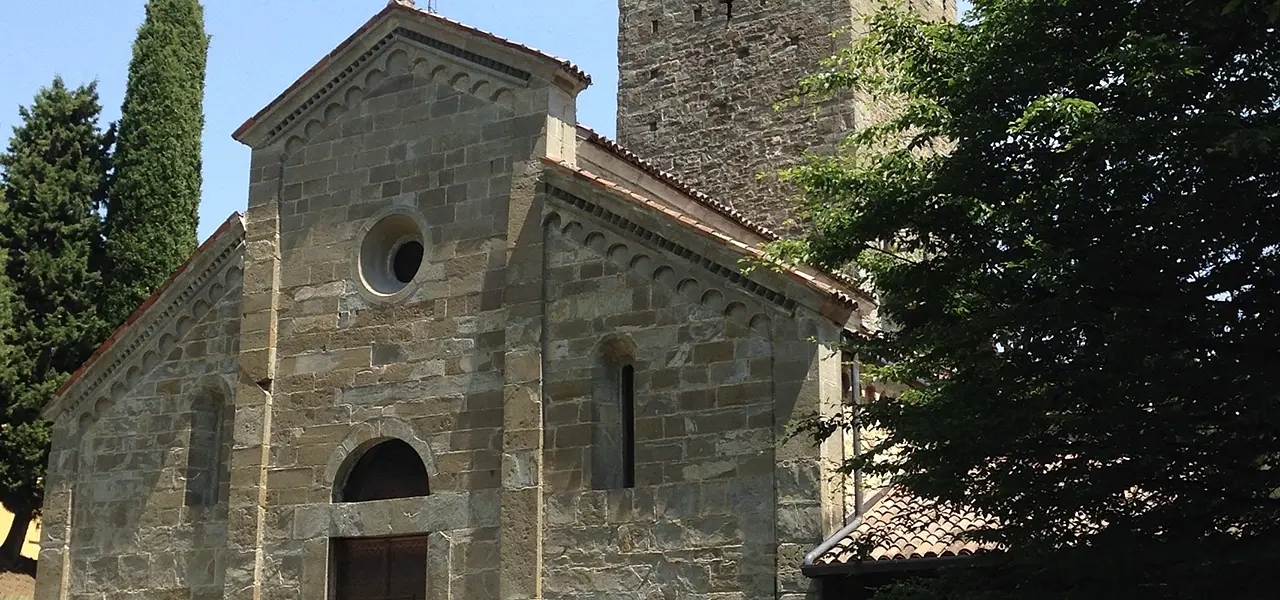SHARRYLAND


Abbey of Sant'Egidio, Fontanella
The fascinating Romanesque abbey on Mount Canto that was Father Turoldo's final resting place


Where is

What it is and where it is
Sant'Egidio Abbey is a striking Romanesque abbey among the vineyards of Monte Canto, accompanied by what remains of the monastery . It was the last home of Father David Maria Turoldo, theologian, philosopher and poet. Today it shows itself as a simple church, with a double-gabled facade of gray and golden sandstone decorated with pilasters and arches, crowned by a mighty bell tower and closed by three elegant apses. Upon entering, one finds oneself immersed in an atmospheric setting.
Why it is special: the play of light and surfaces inside the church.
Light filters through the single-lancet windows and the small oculus, enhancing the grain of the walls, wood and beautiful rough stone floor. In the central apse Christ in the mandorla, surrounded by the Evangelists, is the oldest fresco. The most recent is in the right apse, by Cristoforo Baschenis III the Elder. Other frescoes can be seen on the walls, remnants of a decoration that must have covered the entire church, including a naive Madonna of Milk. Curious geometric signs are arranged on the capitals and along the walls in an order that seems random: spirals, rhombuses, ribbons, checkerboard squares. Perhaps these are salvaged materials.
Fun fact: the cloister and the burial of the legendary Teoperga
The small cloister is also beautiful, though incomplete, and gives a splendid view of the vineyards. A burial is placed in one corner : it is the legendary Teoperga, probably the sister of Alberto da Prezzate, the one who gave the monks the land for the abbey. Local tradition says she was the repudiated bride, who became a nun, of the Frankish king Lothair; indeed, her image, carved on the tombstone, bears the crown.
Not to be missed: the monastery buildings
The rest of the complex is made up of disparate but fascinating buildings; don't miss the somewhat winding tour around the abbey. You will find old agricultural tools, a beautiful Gothic tower, pretty farm buildings with wooden galleries.
A bit of history: the abbey and Father Turoldo
The abbey was founded in 1080 as a Cluniac priory; some frescoes are coeval, others probably from the next century; the one by Baschenis is dated 1532. Father Turoldo settled there in 1964 and founded the Emmaus House here, open to lay and religious people of all religions, which became a point of reference for many protagonists of Italian and other cultural and civic history.
Enter the Map of Italy's Undiscovered Wonders and find treasures where you least expect it... Inspire, Recommend, Share...
Contact
The Map thanks:
Enter the Map of Italy's Undiscovered Wonders and find treasures where you least expect it... Inspire, Recommend, Share...
Where is

Contact

